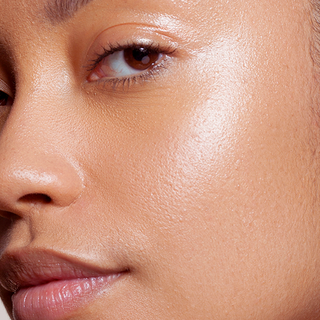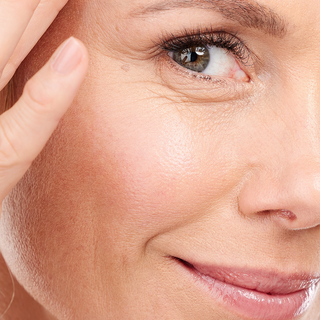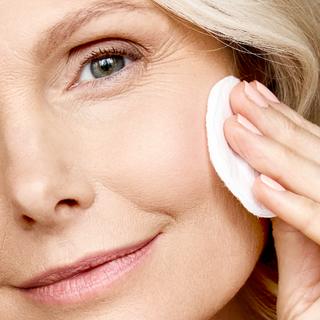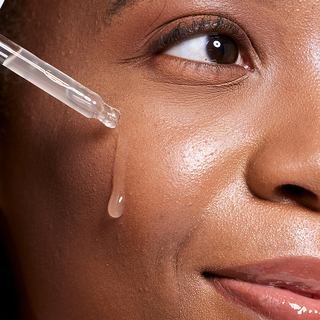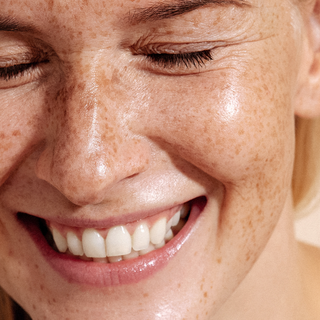If your face feels like a slick oil field by lunchtime, you’ve probably asked: Should I be using a foaming cleanser?
The answer isn’t as simple as "yes" or "no", but don’t worry, we’ve got you.
As a medical-grade skincare brand that believes in education and real results, we’re diving into whether foaming cleansers are oily skin’s BFF or worst enemy, and how to choose the right one for your goals.
The Cleansing Landscape: Know Your Types Before You Lather Up
Foaming Cleansers
Foaming cleansers are often recommended for oily and acne-prone skin because of their ability to cut through sebum and debris.
The magic comes from surfactants, ingredients that reduce surface tension, allowing oil and water to mix and lift away grime.
But let me say this loud and clear: more foam does not mean more clean.
The thicker and bubblier the lather, the more likely it contains harsh surfactants like SLS (sodium lauryl sulfate). While these might make your skin feel super clean in the moment, they can strip your skin’s barrier, triggering even more oil production to compensate.
This is the classic “cleanse → oil rebound → breakout” cycle I see all the time.
✅ Best for: Oily, combination, and acne-prone skin, when formulated correctly
⚠️ Watch for: Tightness, dryness, or squeaky-feeling skin post-wash
Gel Cleansers
These are typically water-based and lightweight. They’re designed to give you that “clean” feeling without the heaviness of a cream or oil. Many gel cleansers also foam up slightly, which makes them a popular choice for oily and acne-prone skin.
I prefer gel cleansers that offer a soft, non-drying lather and include ingredients like niacinamide or salicylic acid to gently clarify without damage.
✅ Best for: Oily, acne-prone, or combo skin
⚠️ Watch for: Harsh surfactants that leave skin feeling squeaky or tight
Cream Cleansers
Cream cleansers are rich, hydrating, and don’t foam. They’re perfect for dry, mature, or sensitive skin types that crave moisture and barrier support.
💡 Pro tip: Just because your skin is oily doesn’t mean you need to skip creams altogether. If you’re using strong actives like retinol or AHAs, a cream cleanser can help restore balance in your routine.
✅ Best for: Dry, sensitive, barrier-impaired skin
⚠️ Watch for: Formulas with fatty alcohols, some clients find they trigger breakouts
Oil Cleansers
Yes, oil breaks down oil. Oil cleansers are amazing at dissolving sunscreen, makeup, and sebum.
They’re typically step one in a double-cleanse method and help prep the skin for a deeper second cleanse.
Always choose non-comedogenic, fragrance-free oil cleansers. If they’re too heavy or contain essential oils, they can backfire on acne-prone skin.
✅ Best for: All skin types as part of a double cleanse
⚠️ Watch for: Lingering residue or potential pore clogging if not followed with a second cleanse
Balm Cleansers
Think of balm cleansers as solid versions of oil cleansers. They melt into the skin and dissolve everything in their path. Ideal for removing long-wear makeup and sunscreen.
These are excellent in dry climates or winter months. But on oily skin, make sure you follow up with something that lifts away the balm thoroughly.
✅ Best for: Dry, mature, or makeup-heavy skin
⚠️ Watch for: Heavy or waxy residue that doesn’t rinse clean
What Makes Foaming Cleansers Different?
Foaming cleansers have earned a reputation, sometimes as saviors for oily skin, other times as the villains behind chronic dryness and breakouts.
The truth? It all comes down to how they’re formulated and what they’re made to do.
Let’s Talk Surfactants: The Real Workhorses
At the core of every foaming cleanser are surfactants, short for “surface-active agents.” These are molecules that bind to both water and oil.
When you lather up, surfactants break down oil, dirt, makeup, and sunscreen, then wash them away when you rinse. That’s the science behind that satisfying foam.
But here’s the catch: not all surfactants are created equal.
The Squeaky-Clean Trap
You know that tight, squeaky feeling your skin sometimes gets after cleansing? That’s not a sign of purity, it’s a warning sign.
If your face feels like it shrunk a size after washing, your cleanser may be doing more harm than good.
That “squeaky clean” effect often means your foaming cleanser is stripping your skin’s natural lipids, leaving your barrier compromised and your sebaceous glands scrambling to overproduce oil in response.
The Sulfate Situation
One of the main culprits behind overly aggressive cleansers is sodium lauryl sulfate (SLS) and its cousin, sodium laureth sulfate (SLES).
These are powerful surfactants often used in detergents and shampoos, and while they produce rich, bubbly foam, they’re far too harsh for delicate facial skin, especially if it’s already inflamed or acne-prone.
In contrast, modern foaming cleansers are starting to use gentler alternatives like:
-
Sodium cocoyl isethionate
-
Disodium laureth sulfosuccinate
-
Cocamidopropyl betaine
These still cleanse effectively, but they respect the skin’s natural moisture barrier and help maintain a balanced pH.
📉 pH Levels Matter More Than You Think
If your skin feels tight and dry, even after moisturizing, it’s probably because you’re using a foaming cleanser with a high pH or harsh surfactants.
A high-pH product can disrupt your acid mantle, which is your skin’s natural protective shield. When that’s thrown off, your skin becomes reactive, dehydrated, and more prone to breakouts.
What You Should Look For Instead
If you love the clean feel of a foaming cleanser (and I get it, it’s satisfying), look for these markers:
-
Low pH (around 5.0–5.5)
-
Gentle surfactants (SLS-free)
-
Hydrating ingredients like hyaluronic acid, glycerin, or niacinamide
-
No alcohol or fragrance, especially for reactive or acne-prone skin
A foaming cleanser can be your skin’s best friend, but only if it’s gentle enough to work with your skin, not against it.
If your current cleanser leaves you feeling dry, flaky, or tight, even if you're oily, it's time to switch. Your skin will thank you.
Foaming Cleansers For Oily Skin: Myth Or Must-Have?
A well-formulated foaming cleanser is absolutely a must-have for oily skin, but only when it respects your skin’s natural balance.
When It Works, It Works Beautifully
A properly formulated foaming cleanser will:
-
Lift excess oil without stripping moisture
-
Minimize breakouts by keeping pores clear
-
Support a balanced skin microbiome
-
Remove sweat, grime, and SPF like a dream
For oily and acne-prone skin, a cleanser that can emulsify oil and break down congestion is non-negotiable.
Essential Lactic Acid Cleanser is my go-to foaming cleanser every day and recommend it to my clients, especially those who wear makeup or mineral sunscreen.
But the Wrong Formula Can Backfire
Many people use the wrong kind of foaming cleanser, and it ends up making their oily skin worse.
Over-cleansing or using harsh surfactants causes your skin to panic. It loses significant lipids and responds by cranking up oil production, often resulting in irritation, breakouts, and that dreaded midday shine.
That’s why it’s not uncommon to hear, “I started using a foaming cleanser for my oily skin… and now I’m even oilier.” The issue isn’t the foam, it’s the formulation.
How to Tell If Your Cleanser Is Helping or Harming
How does your skin feel 15 minutes after you cleanse?
-
If it feels soft, calm, and balanced → ✅ It’s working for you.
-
If it feels tight, dry, or immediately greasy again → ❌ Time to switch.
Other red flags include flaking, irritation around the nose and mouth, or breakouts that show up in areas you never had before.
📌 Bonus Tip: Try the “film test”, if your skin feels like there’s a leftover residue or gets shiny too quickly, your cleanser might not be rinsing clean or could be clogging your pores.
The SPF Factor: An Underrated Use
Foaming cleansers are especially effective in your PM routine when you need to remove a day’s worth of sunscreen, pollution, and sweat.
If you’re wearing SPF daily (which I hope you are), a foaming cleanser can help break it down without leaving behind a film or buildup that leads to clogged pores.
→ Try out: Illuminating Beauty Balm SPF 44
💡 Pro Tip:
If your skin feels greasy and flaky at the same time, there’s a good chance you’re dealing with dehydrated oily skin, a tricky mix of excess oil on the surface but water loss beneath.
This is one of the most misunderstood skin states I see.
Use a gentle foaming cleanser with hydrating ingredients like glycerin, ceramides, or hyaluronic acid, and follow it up with barrier-supportive hydration. You’ll reduce oil without triggering dryness or flaking.
How To Choose The Right Foaming Cleanser For Oily Skin
If you’ve ever stood in the skincare aisle overwhelmed by endless foaming cleansers that all claim to “control oil” or “clear pores,” trust me, you’re not alone.
Most of those cleansers are overhyped and underperforming. The right foaming cleanser doesn’t just wash your face, it actively supports your skin’s health.
For oily skin, you want a formula that balances, not battles. That means targeting oil without compromising your skin barrier, and yes, that’s 100% possible when you know what to look for.
The Hero Ingredients That Actually Work
These are the ingredients I personally look for (and use in my own formulations) when creating products for oily and acne-prone skin:
-
Salicylic Acid (BHA): This oil-soluble exfoliant penetrates deep into pores, breaking up sebum and dead skin buildup. It’s a game-changer for blackheads, congestion, and acne prevention. You can find this ingredient in our Clarifying Salicylic Acid Cleanser!
-
Niacinamide (Vitamin B3): One of my favorite multitaskers. It helps regulate sebum production, reduce inflammation, and even out tone, all without irritation. For oily skin that’s reactive or breakout-prone, niacinamide is a quiet hero.
-
Ceramides + Hyaluronic Acid (HA): These ingredients restore the skin barrier and draw in hydration. Why does that matter for oily skin? Because when your skin is properly hydrated, it stops overproducing oil to compensate.
What To Avoid (No Matter What The Label Says)
Some ingredients still sneak into mainstream foaming cleansers, and they’re a hard no in my book, especially for anyone struggling with oil imbalance or breakouts:
-
SLS (Sodium Lauryl Sulfate): Strips the skin, disrupts the barrier, and often leaves that dreaded tightness behind.
-
Alcohol-based formulas: These give a false sense of mattification but can actually trigger more oil production.
-
Artificial fragrances and dyes: Unnecessary and often irritating, especially for acne-prone or sensitive skin.
Even if your skin is oily, it doesn’t mean it’s invincible. Harsh ingredients wear down your defenses over time and often lead to long-term issues like redness, flaking, and post-inflammatory hyperpigmentation.
Choosing the right foaming cleanser isn’t about picking the most popular one on the shelf. It’s about selecting a formula that targets oil intelligently, one that respects your barrier, delivers actives gently, and leaves your skin feeling clean, calm, and in control.
That’s the foundation for real, lasting results.
Featured: Maria Kane Foaming Cleanser Must-Haves
If you struggle with oily skin, frequent breakouts, or feel stuck in that wash → dry out → breakout loop, there’s a better way forward.
I designed this cleanser specifically for skin that overproduces oil but still needs a gentle, effective reset. No harshness. No tightness. Just clean, balanced skin, every time you rinse.
Clarifying Salicylic Cleanser
The Clarifying Salicylic Cleanser is more than just a face wash, it's a solution rooted in everything I’ve learned from treating real skin in real life. It’s what I reach for when a client walks in overwhelmed by oil, congestion, and reactive skin that’s been stripped raw by overhyped products.
Why It Works
Every ingredient in this formula serves a purpose:
-
2% Salicylic Acid: Clears out congested pores and prevents breakouts before they form. It’s oil-soluble, which means it works at the root of the issue.
-
Niacinamide: Regulates oil production and reduces redness. It also helps support your skin barrier, which is key for long-term balance.
-
Botanical Extracts: Calm inflammation and support overall skin clarity, ideal for acne-prone skin that needs soothing, not scrubbing.
And most importantly? It’s free of SLS, synthetic fragrance, alcohols, and filler fluff that often leads to irritation and barrier disruption.
Essential Lactic Acid Cleanser
If your skin is oily and feels rough, dull, or textured, this is the cleanser I recommend for smoother, more refined skin, without the harshness of physical exfoliants.
The Essential Lactic Acid Cleanser is a gentle foaming formula that uses lactic acid, a skin-smoothing alpha hydroxy acid (AHA), to softly exfoliate and brighten while lifting away excess oil and debris.
Why It Works
-
Lactic Acid (AHA): Helps dissolve dead skin cells, unclog pores, and boost radiance without irritation.
-
Gel-to-Foam Texture: Provides a refreshing, cushiony cleanse that doesn’t strip or dry out the skin.
-
Balancing Finish: Leaves skin feeling clean, clear, and smooth, ideal for those who want to even out texture without disrupting the skin’s natural barrier.
Pairs Well With…
After cleansing, I always recommend layering with:
-
Barrier Replenishing Cream – to lock in hydration and fortify the skin.
-
Nourishing HA Peptide Serum – for hydration and barrier support, especially if you’re using retinoids or other actives.
This combination allows you to treat oily, acne-prone skin without triggering rebound breakouts or irritation, which is exactly what so many clients have been searching for.
When I say this cleanser was made for you, I mean it. I formulated it based on what oily skin really needs: balance.
Bonus Picks for Other Skin Concerns
Oily skin isn’t one-size-fits-all. Some of my clients have oil and acne. Others have oil and sensitivity. And some are dealing with oil plus rough texture or dullness.
That’s why I never recommend a cleanser in isolation, it always depends on the full picture of your skin’s needs.
If your skin is oily but comes with a plus one, sensitivity, reactivity, or uneven texture, here are two standout cleansers from the Maria Kane collection that might serve you better than traditional foaming formulas:
Soothing Peptide Cleanser
For oily skin that’s also sensitive, reactive, or barrier-compromised
Sometimes oily skin isn’t tough, it’s fragile. If your skin stings easily, gets red with new products, or has recently gone through laser, retinoids, or seasonal stress, this is your gentlest option.
-
Creamy, non-foaming formula
-
Infused with soothing botanical peptides
-
Thoroughly removes makeup, oil, and buildup without compromising the barrier
-
No sulfates, no fragrance, no irritation
💡 Perfect for those who say, “Everything makes me break out or burn.” This formula keeps your skin clean, calm, and protected.
Not Sure About Foaming Cleansers? These Questions Will Help You Decide
Choosing the right cleanser shouldn’t feel like a guessing game, so let’s simplify it.
If you’ve been bouncing between hydrating cleansers that break you out and foaming ones that leave your skin parched, here’s a quick gut-check to guide you:
Does Your Skin Feel Tight After Cleansing, Even Before Applying Moisturizer?
That’s a sign your current cleanser might be too harsh or too alkaline. Look for a low-pH foaming option with barrier-friendly ingredients.
Do You Break Out More After Switching To “Hydrating” Or Cream Cleansers?
You’re not alone. Many of my clients have tried gentle cream cleansers only to end up with new congestion or cystic breakouts.
Often, it’s not the hydration, it’s the texture or ingredient mix. Some "hydrating" cleansers contain fatty alcohols or emollients that can feel soothing but clog oily skin.
Does Sunscreen Or Makeup Still Linger After Cleansing?
If your cleanser isn’t fully breaking down your SPF or foundation, especially at night, it could be contributing to build-up and breakouts.
If you answered yes to any of the above, then a well-formulated foaming cleanser, one with calming, oil-soluble actives, might be exactly what your skin needs.
Maria’s Tips
Foaming cleansers have earned a mixed reputation, and for good reason.
Many are too harsh, too drying, or packed with outdated ingredients that do more harm than good. But when formulated with intention, a foaming cleanser can be one of the best tools for oily, breakout-prone skin.
The goal isn’t to scrub your skin into submission.
It’s to cleanse with precision, lifting oil and impurities while protecting the barrier you’ve worked hard to build. at Maria Kane, we do things differently.
With smart ingredients like 2% salicylic acid, niacinamide, and botanical calmers, our Clarifying Salicylic Cleanser and Essential Lactic Acid Cleanser are medical-grade, non-sensitizing, and designed specifically to keep oily skin in check without triggering inflammation or rebound oil production.
It’s simple. It’s effective. And it works.


